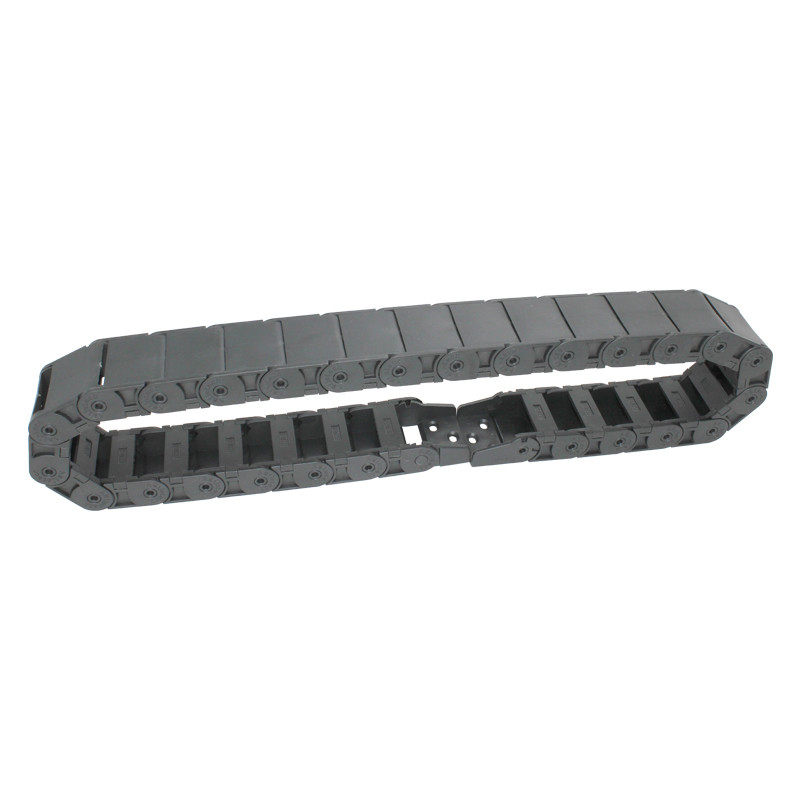high strength cable carrier
High Strength Cable Carriers Essential Components for Modern Industries
In today’s fast-paced industrial landscape, the demand for efficiency and reliability has led to the widespread adoption of advanced technologies. One such advancement is the high strength cable carrier, a crucial component that has revolutionized the way we manage and protect cables in various applications. These carriers are specifically designed to support, organize, and protect cable systems in environments ranging from manufacturing plants to robotic applications.
At its core, a cable carrier—also known as a cable track or drag chain—is a flexible system that guides and protects cables and hoses as they move with machinery, equipment, or robotic arms. High strength cable carriers are engineered to withstand the rigors of demanding environments while ensuring minimal wear and tear on the cables they support. Unlike traditional cable management systems, these carriers offer enhanced durability, making them ideal for scenarios where heavy loads and repetitive motion are common.
One of the standout features of high strength cable carriers is their construction. Made from resilient materials such as reinforced plastics or metals, they can withstand harsh conditions including extreme temperatures, high tensile forces, and exposure to chemicals. This durability not only prolongs the lifespan of the cables housed within but also reduces maintenance requirements and associated costs.
The importance of high strength cable carriers can be seen across a variety of industries. In the automotive sector, for instance, they play a pivotal role in assembly lines where robotic arms operate with precision. These carriers ensure that cables and hoses do not tangle or wear out due to constant movement. Similarly, in manufacturing plants, where heavy machinery and automated systems are prevalent, high strength cable carriers help maintain the integrity of electrical and hydraulic lines, contributing to uninterrupted operations.
high strength cable carrier

Moreover, in the world of automation and robotics, the significance of these carriers cannot be overstated. As robots become more integral to manufacturing processes, the need for reliable cable management systems grows. High strength cable carriers facilitate smooth motion and flexibility, allowing robotic arms to reach their full potential without the hindrance of cable stress. This is especially crucial in high-speed operations where efficiency is key.
Another advantage of high strength cable carriers is their customizable nature. Each industrial application has unique requirements, and manufacturers can tailor these carriers to suit specific needs. Factors such as size, shape, length, and weight capacity can all be adjusted to accommodate the demands of any project. This versatility ensures that high strength cable carriers can be effectively used in a diverse range of applications, from CNC machines to conveyor systems.
In addition to their physical benefits, high strength cable carriers contribute to improved safety standards in industrial environments. By organizing and enclosing cables, they significantly reduce the risk of tripping hazards and cable damage, promoting a safer workplace. Companies that prioritize safety see not only a decrease in workplace incidents but also an increase in overall productivity, as employees can work with confidence in a well-organized environment.
As industries continue to evolve, the integration of high strength cable carriers into production processes is likely to increase. Innovations in materials and design are ongoing, pushing the boundaries of what these cable management systems can achieve. With a focus on enhancing efficiency, safety, and reliability, the future of high strength cable carriers looks promising.
In conclusion, high strength cable carriers are indispensable in modern industrial applications. Their durability, versatility, and safety benefits make them a smart investment for any industry that relies on complex cable systems. As technology advances and the demands of industries grow, the importance of high strength cable carriers will undoubtedly continue to rise, playing a crucial role in shaping the future of manufacturing and automation. With the ability to enhance efficiency while safeguarding vital components, these carriers are poised to remain at the forefront of industrial innovation.








